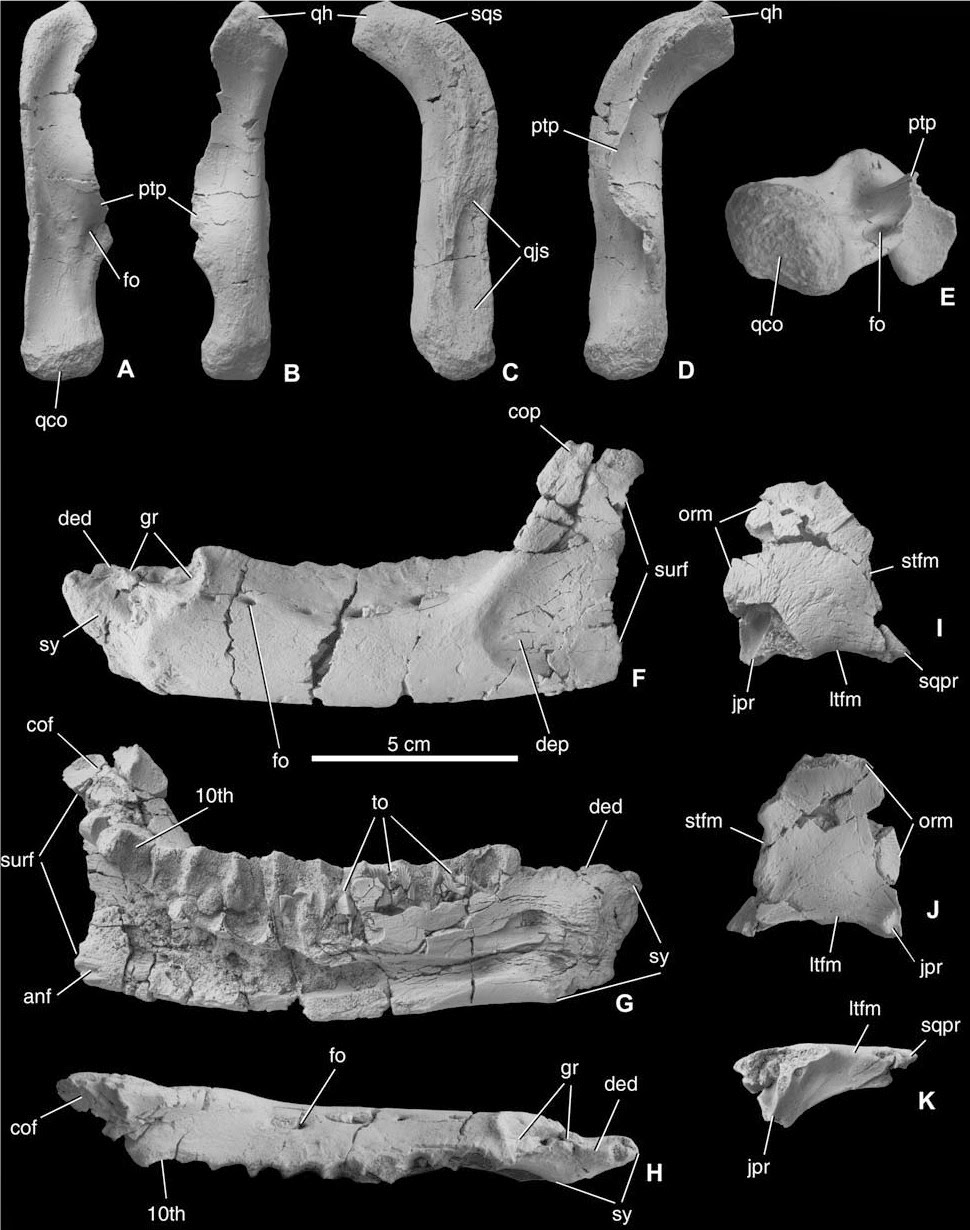The Rhabdodontids are a group of Iguanadontid Ornithischian Dinosaurs known only from the Late Cretaceous of southern Europe. To date three genera have been described; the first being Rhabdodon from France and Spain, which has given its name to the group. Mochlodon suessi was originally used to describe a small tooth from Austria thought to belong to a juvenile; this genus is now generally considered to be invalid, though a number of other fragmentary specimens from Austria have been referred to the species as Rhabdodon suessi. Finally a number of specimens from the Haţeg Basin of Romania have been referred to the genus Zalmoxes; these Romanian specimens are exceptionally small, and are thought to represent an example of island dwarfism, a phenomenon observed in other Dinosaurs from Haţeg.
In a paper published in the journal PLoS One on 21 September 2012, Attila Ősi and Edina Prondvai of the Lendület Dinosaur Research Group at Eötvös Loránd University, Richard Butler of the GeoBio-Center, Ludwig-Maximilians-Universität München and David Weishampel from the Center for Functional Anatomy and Evolution at Johns Hopkins University describe a new Rhabdodontid Dinosaur from the Late Cretaceous Csehbánya Formation at the Iharkút continental vertebrate-bearing site of western Hungary.
The new material is assigned to the genus Mochlodon; it is more extensive than the Austrian material, and though still fragmentary, is evidently similar enough to be placed in the same genus, and distinct enough from the French and Spanish material to merit being placed in a separate genus, leading Ősi et al. to conclude that the genus Mochlodon should be resurrected and treated as valid. However the Hungarian material is distinct enough from the Austrian material that Ősi et al. place it in a new species, Mochlodon vorosi, after Attila Vörös, the founder of the Paleontological Research Group of the Hungarian Academy of Sciences.
The material assigned to Mochlodon suessi includes, beside the original tooth, a right dentary (jawbone), as well as another tooth and a number of fragmentary limb bones. Mochlodon vorosi is described principally from another dentary. The dentary of Mochlodon suessi has a depression beneath the coronoid process that was thought to be a developmental feature in an immature Dinosaur, however this feature is more developed in Mochlodon vorosi, which, although also small, is apparently a mature animal. From this Ősi et al. conclude that the depression is a valid diagnostic feature for the genus, and that Mochlodons, despite being continent dwellers, were considerably smaller than Zalmoxes, reaching around 150-200 cm in length, and therefore raising questions about the island dwarf interpretation of Zalmoxes.
Cranial remains of Mochlodon vorosi from the Upper Cretaceous Csehbánya Formation, Iharkút, western Hungary. (A) Right quadrate in cranial, (B) caudal, (C) lateral, (D) medial, (E) distal views; (F) left dentale in lateral, (G) medial, (H) occlusal views; (I) left postorbital in dorsal, (J) ventral, (K) lateral views. Anatomical abbreviations: anf, articular surface for angular; cof, articular surface for coronoid; cop, coronoid process; ded, dorsal edg of the dentary; dep, depression; fo, foramen; gr, groove; jpr, jugal process; ltfm, margin of lateral temporal fenestra; orm, orbital rim; ptp, pterygoid process; qco, quadrate condyles; qh, quadrate head; qjs, articular surface for quadratojugal; sqpr, squamosal process; sqs, articular surface for squamosal; stfm, margin of supratemporal fenestra; surf, articular surface for surangular; sy, symphysis; to, tooth; 10th, 10th alveolus. Ősi et al. (2012).
In addition to the first dentary from which the diagnosis was made, a further four complete dentaries (two left and two right) as well as six fragmentary specimens are referred to Mochlodon vorosi, confirming that the initial specimen was not atypical. In addition a left postorbital, two right quadrates, 38 loose teeth, four isolated vertebrae, a compressed sacrum, three coracoids, a fragmentary scapula, a fragmentary and an intact humerus, an ulna, two femora, a fragmentary femur, one complete and two fragmentary tibias and two phalanges are referred to the species. While these are scattered bones from numerous individuals, they do serve to re-affirm Ősi et al.’s estimate of the size of Mochlodon vorosi.
Comparison of histology-based adult body sizes of Mochlodon, Zalmoxes and Rhabdodon represented by the silhouettes of the animals. Ősi et al. (2012).
See also…
 A new species of Hadrosauroid Dinosaur from the Late Cretaceous of Shanxi Province, China.
A new species of Hadrosauroid Dinosaur from the Late Cretaceous of Shanxi Province, China. A new Lambeosaurine Dinosaur from the French Pyrenees.
A new Lambeosaurine Dinosaur from the French Pyrenees. New species of End Cretaceous Hadrosaur from the Russian Far East.
New species of End Cretaceous Hadrosaur from the Russian Far East.
Follow Sciency Thoughts on Facebook.


